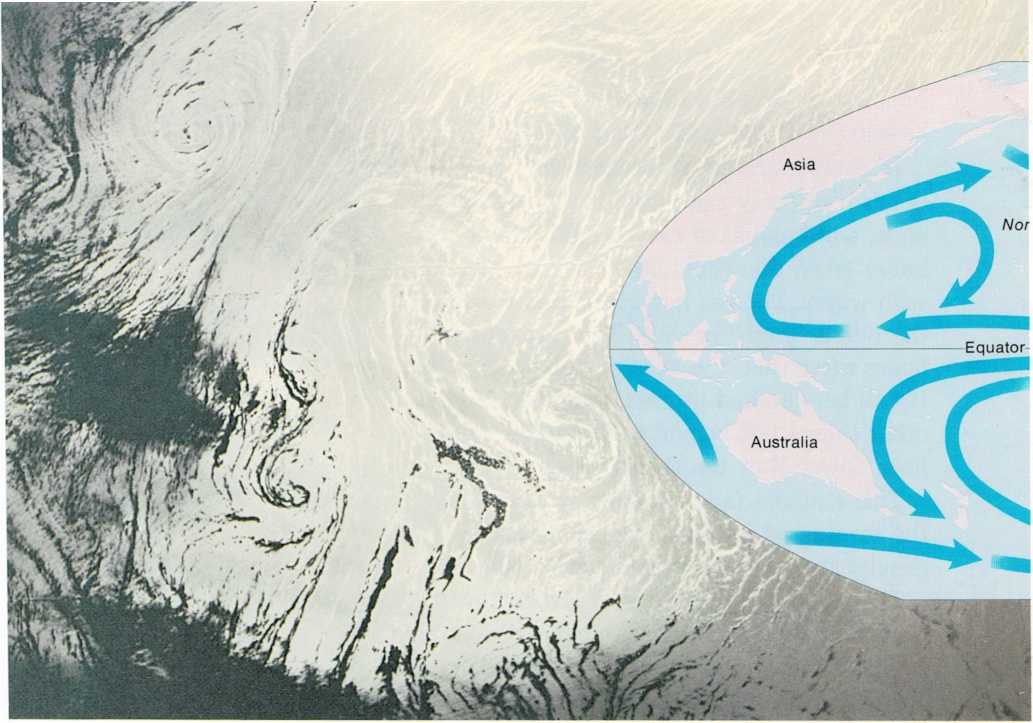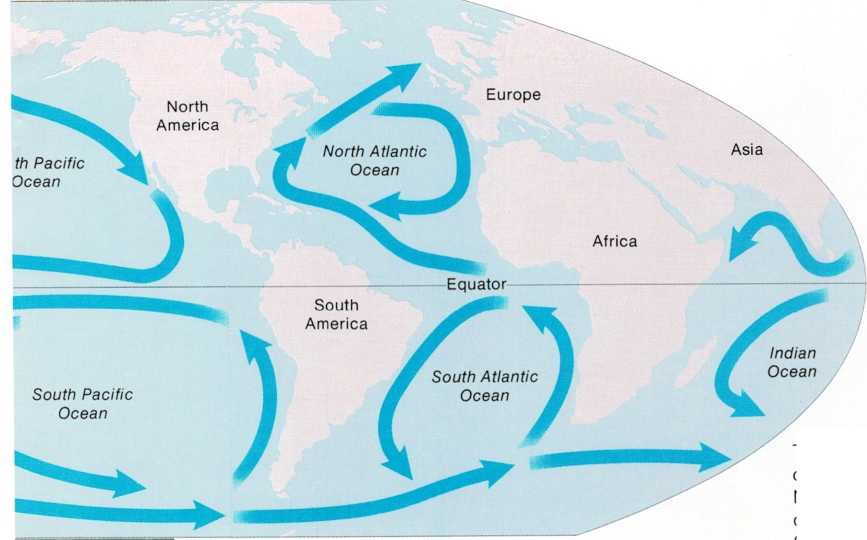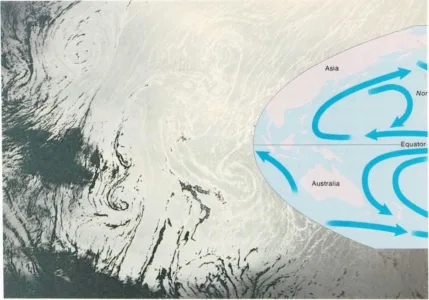Ocean tides are caused mainly by the pull of the moon’s gravity. High
tide occurs directly below the moon and, at the same time, on the
opposite side of the earth. The earth turns halfway around every
twelve hours. So, there is a high tide at the same place every twelve
hours.

Swirling currents in the Ionian Sea can be seen in this photograph
taken from a space shuttle. The thin lines crossing the currents are
the wakes of ships.
Rivers in the sea
Strange as it may seem, there are rivers in the sea—great, moving
streams of water that are mightier than any river that runs through the
land. These rivers are called currents, a word that means \”running.”
There are a great many currents, such as the Equatorial Current, the
Gulf Stream, and the California Current. All of these currents run near
the sea’s surface and are easily seen. But there are also other currents
that flow far below the surface of the sea.
The surface currents are important to people. For one thing, they affect
the climate, making some places cold and others warm. For another thing,
they affect the speed of ships. Hundreds of years ago, sailors found
that sailing with a

current increases a ship’s speed, while sailing against a current
slows down a ship.
The surface currents are also important to the animal life in the sea.
Many kinds of sea creatures drift with a current, letting it take them
where it goes. These creatures are eaten by other sea animals. Thus, the
surface currents that flow through the ocean bring food to many of the
sea’s dwellers.
Currents move mainly because of wind. But they are also helped by the
heat of the sun and the rotation, or spin, of the earth.
Ocean currents start at the equator, earth’s middle. There, strong
winds, called the trade winds, push surface water westward. When a
current reaches a continent, it is turned toward the north or the south.
The currents north of the equator flow in a clockwise direction. Those
south of the equator flow counterclockwise. The currents form great,
circular rivers, often with little “branches” curling away from them.
The arrows show how ocean currents flow. North of the equator, currents
flow clockwise. South of the equator, they flow counterclockwise.

